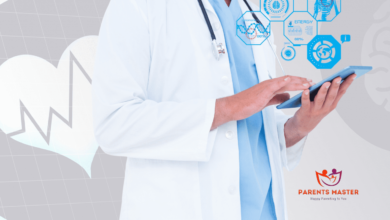12 Questions to Ask When Choosing a Teen Treatment Program

Teenage years can be complicated since kids enjoy trying new things and meeting new people. They are more vulnerable to the perils of the outside world in this stage, and they tend to have mood swings due to the changes occurring inside their brains. All of this might also be related to substance use. As you well know, it is your responsibility as a parent to keep your child healthy. In this article, you will understand how rampant substance abuse is among teenagers, its signs, and the recommended teen treatment programs.
What is Adolescent Substance Abuse?
A problematic and repeated pattern of substance consumption can be considered substance abuse. According to the Dictionary of Psychology by the American Psychological Association (APA), substance abuse is defined as “compulsive substance use” that generally results in various consequences in personal, social, professional, and legal aspects.
Adolescent Substance Abuse By the Numbers
Substance abuse is a growing concern for parents in Los Angeles, as well as worldwide. The ease of access to such substances has made the situation worse. The “Monitoring the Future” survey in 2019 provided much information regarding the use of substances such as alcohol, cigarettes, marijuana, and other illicit drugs in the United States. The numbers have risen quickly from 2019 to 2020, despite the lockdown and quarantine protocols brought by the pandemic.
Alcohol
Alcohol is the most consumed substance worldwide. Unfortunately, the largest alcohol drinkers population are the younger adults aged 18 to 25, followed by those in the 12-17 range. The 2020 data reports the following alcohol consumption percentages: 9.9% of 8th graders, 20.3% of 10th graders, and 33.6% of 12th graders.
Cigarettes and e-cigarettes
Cigarette smoking is a trend among the younger generation since they believe it makes them “cool” in social settings. In 2020, regular cigarettes were consumed by 2.2% of 8th graders, 3.2% of 10th graders, and 7.5% of 12th graders.
When it comes to e-cigarettes or vapes, there are three methods of consumption according to the contents: just flavoring, marijuana, and nicotine. Among the three types, nicotine consumption through vapes has increased dramatically from 2017 to 2020. Nicotine vaping is done by 10.5% of 8th graders, 19.3% of 10th graders, and 24.7% of 12th graders.
Moreover, marijuana vaping is the second most prevalent type of vaping substance. Statistics show that 4.2% of 8th graders, 11.3% of 10th graders, and 12.2% of 12th graders use marijuana vapes. Meanwhile, e-cigarettes with flavoring do not contain such substances. The numbers show that 6.8% of 8th graders, 8.4% of 10th graders, and 10.4% of 12th graders used these devices in 2020.
Marijuana and other illicit drugs
Among all the illicit drugs available in public, marijuana is the most used and abused substance. Due to the legalization of its sale and use in many states, even teens can easily get marijuana in the streets. Among teens, 12th graders have the highest consumption rate (21.1%), followed by 10th graders (16.6%) and 8th graders (6.5%). For cocaine, there are not many teens who use the substance. The statistics show that less than 1% of each grade level uses cocaine.
Does My Child Need Teen Treatment?
Teenagers have numerous reasons to justify their substance abuse behaviors. You have to understand them but also make an effort not to tolerate negative behaviors. A Teen Treatment Program must be considered as soon as you notice signs of adolescent substance abuse. Here are some signs that you can look out for:
- Poor academic performance: Teens who become more addicted to substances such as alcohol and drugs see a sharp decline in their academic performance. They might feel nauseous or lose concentration during classes due to the chemical chemicals present in their system. These substances are prohibited at schools, given that students are underage. As a result, those who are caught using them might face suspension or expulsion. Your child’s school might send you letters, phone calls, or notices regarding their usage of illegal substances.
- Finding unusual items or devices: Some substances come in different containers that may look like everyday objects. For example, e-cigarettes or vaping gadgets are commonly mistaken for common items like pens or markers. They are designed to look like ordinary objects, but you can recognize these devices if the parts are detachable.
- Changes in behavior: Due to the substances that affect the teenage brain, their behavioral patterns shift abruptly, generally for no apparent cause. Most of the time, they are hostile and irritable.
- Frequent sickness: Most substances are taken by drinking, chewing, smoking, or inhaling them. This means that respiratory and liver problems might occur. Prolonged use of these substances could also lead to severe consequences such as cancer.
- Sudden weight drop or gain: Drug consumption results in significant weight loss or sudden weight gain due to changes in eating and sleeping routines.
- No allowance: If your teen consumes illegal substances, chances are they purchase them using their school allowance. Keep an eye out for financial issues.
If at least two of the symptoms listed above co-occur over an extended length of time, your teen could be considered drug dependent. These symptoms can linger for days or weeks, and you should seek expert care right away.
12 Questions to Ask When Choosing Treatment Programs for Your Teen
Before choosing the best teen treatment programs for your adolescent’s substance abuse, your responsibility is to ensure that the facility can cater to their needs. Here are some questions that you should ask before closing off transactions with treatment providers:
- What are the scopes of the teen treatment programs?
- What is your company’s philosophy about successful recovery?
- Is the teen treatment facility licensed and accredited?
- Does the teen treatment center address dual diagnosis?
- Does the teen treatment program offer an in-patient setup, outpatient setup, or both?
- Do you offer treatments to walk-in patients?
- How do you handle detox?
- How long do the treatments last?
- What are the amenities inside the treatment facility?
- Do you offer aftercare programs?
- What are the payment options and accepted insurance policies?
Factors to Consider When Looking for Treatment Centers Online
Aside from the general knowledge about the treatment centers themselves, it is essential to understand the scope of the treatment programs. Here are some key factors that you should look for in the websites of treatment centers:
- The treatment practices are evidence-based.
- The programs offered suit the needs of your child.
- Healthcare professionals prioritize the mental health needs of adolescents.
- The facility provides aftercare or support for post-treatment recovery.
- Family support is incorporated into the programs.
- The programs aim to develop social, emotional, and spiritual well-being.
- The facility provides a balanced diet and gives time for exercising.
Why Treatment is Essential: Facts that Show How Substance Abuse Damages the Teenage Brain
Although not all adolescents become addicts, substance use and abuse can still affect their brains. These may appear within hours or may persist for more extended periods. Prolonged consumption of harmful substances could lead to brain damage. Here are some facts about the detrimental effects of substance use and abuse on the teenage brain:
- The brain’s prefrontal cortex only develops completely after turning 20. Teenagers find it difficult to deal with opinions that are not aligned with their parent’s views. The brain starts to transition as they get out of this comfort zone. During early brain development, the brain cells produce trillions of “connections” that gradually improve during childhood or adolescence. The prefrontal cortex, which regulates the decision-making processes, is one of the areas of the brain that develop last. The entire process is not complete until young adulthood (ages 20 and above), meaning teenagers are more prone to experiment with drugs.
- The adolescent brain is highly vulnerable to risk-taking tendencies. Young minds are “wired” to experiment and try new things while exploring all the possibilities around them. As mentioned before, the brain’s prefrontal cortex takes many years to develop sufficiently, meaning that the teenage stage is a period full of impulsive and risky decisions.
- Substance use stimulates the reward system of the teenage brain. Drinking alcohol and taking drugs activate the teenage brain’s reward circuitry. This area is responsible for the pleasure that comes with using substances. It also makes a person crave and exhibit drug-seeking behaviors during the lack of such substances in the system. When they are exposed to these rewarding feelings, their tolerance builds up quickly, and they are more likely to experience substance addiction at an older age.
- Drug use may affect the brain’s communication between different regions. According to studies, the human has two divisions: the gray and white matter. The gray matter comprises the cell bodies, while the white matter is composed of “communication tracts” that link between brain regions (frontal lobe, parietal lobe, occipital lobe, and temporal lobe). Since alcohol and drugs affect these divisions, the flow of information inside the brain is compromised. This will result in lower volumes of white matter, making a person lose concentration and reasoning.
- Substance use damages a person’s thinking abilities. A person’s memory and logical reasoning may be affected by alcohol and drug use. According to scientific research and evidence, these substances negatively affect thinking abilities, especially when consumed during adolescence. Since this stage is considered the most critical for development, the negative effects might be severe and persist for long periods of time. Teenagers may experience loss of memory, lower attention span, and slower information-processing skills.
- The changes brought by substance use may be permanent. The human brain is an essential organ, and if we do not take care of it, the effects can be fatal. Drug-related brain damage may have lifelong consequences.
Common Teen Treatment Therapies
Teen Treatment centers and teen drug rehab programs typically offer different programs for adolescents, but the most common are therapies. There are various approaches to providing therapy treatments. Some of these are dialectical behavior therapy and cognitive-behavioral therapy. These were initially intended for treating personality disorders, but since the use of substances also changes brain composition and behavior, their scope has broadened.
- Dialectical Behavior Therapy (DBT)
Dialectical behavior therapy (DBT) is a modified type of cognitive-behavioral therapy (CBT). It addresses behavioral difficulties, including impulsivity and overwhelming emotions. These are most common in teenagers with mental health problems and substance misuse. Its primary objective is to teach people to live with purpose, build healthy stress-coping mechanisms, regulate their emotions, and improve interpersonal connections. It also teaches teenagers to accept themselves while acknowledging that there is space for progress and healing.
- Cognitive Behavioral Therapy (CBT)
Cognitive-behavioral therapy (CBT) is another kind of psychotherapy that teaches people to recognize and change harmful behavioral patterns that affect their emotions. It emphasizes the importance of thoughts, feelings, and actions that may affect social connections. CBT identifies these thoughts, challenges them, and then replaces them with more objective, realistic ones.
Adolescent and Teen Treatment Programs in Los Angeles
To avert fatal outcomes, we seek to provide a comprehensive adolescent and teen substance misuse treatment. The Teen Treatment Program is a comprehensive and evidence-based approach that provides treatment to adolescents and teens who are battling with substance abuse, behavioral issues, or mental health problems.
If you witness your teen using drugs or if you notice symptoms of substance abuse, please do not hesitate to reach out to us as soon as possible. At Key Transitions, we can give your child the intervention and recovery processes they deserve.




